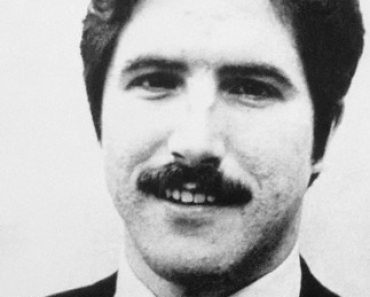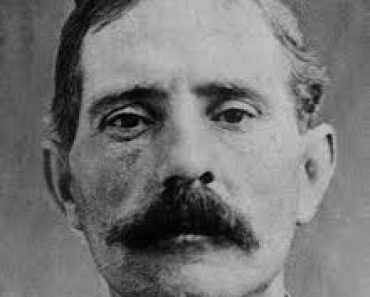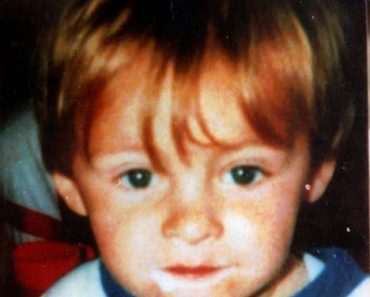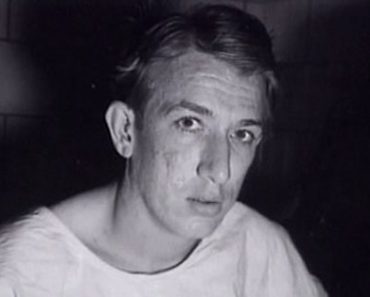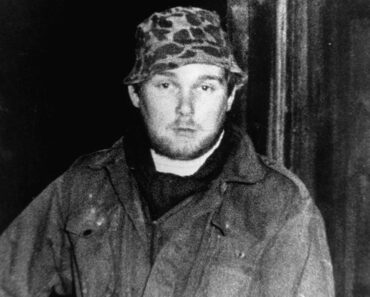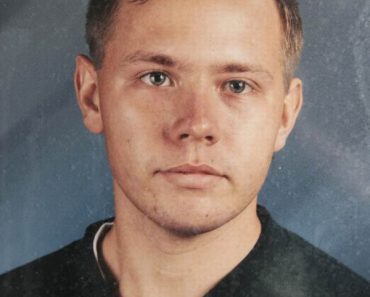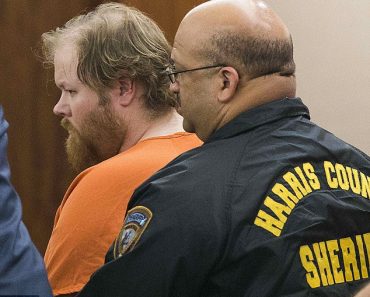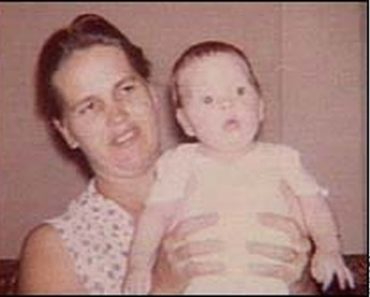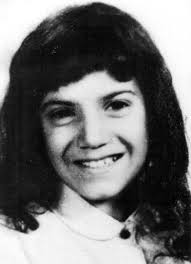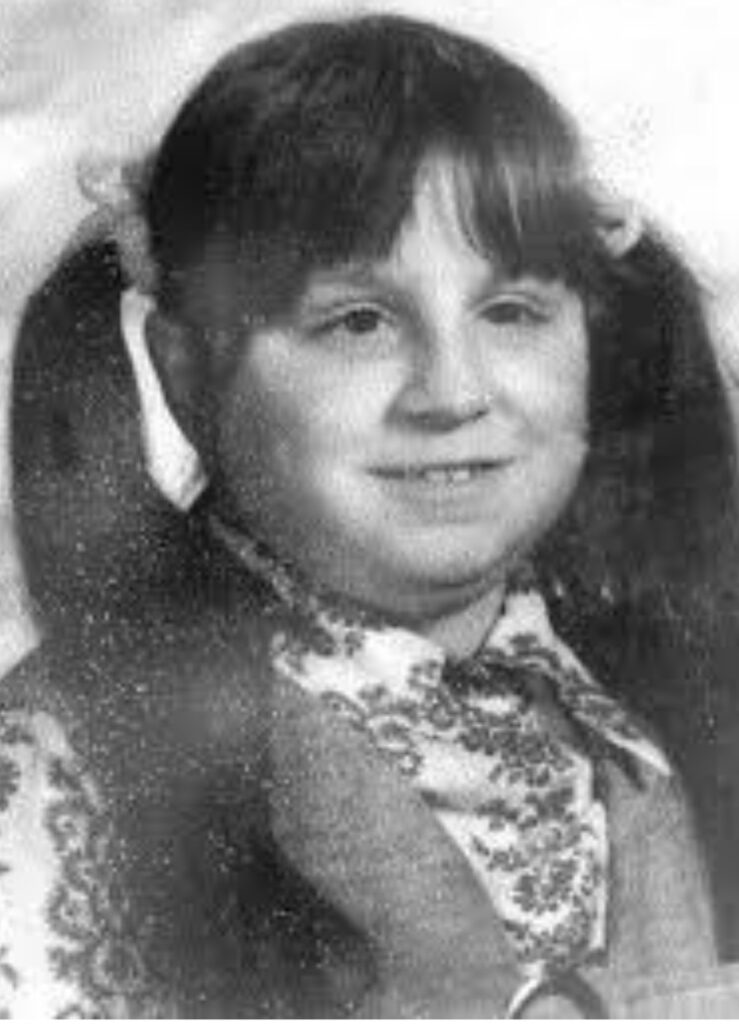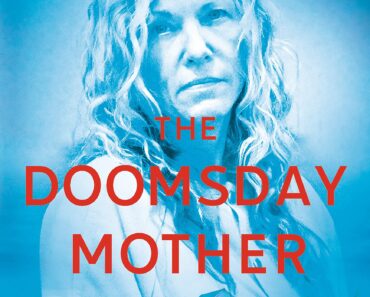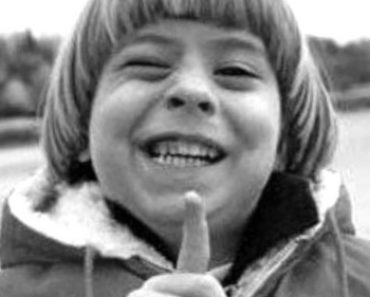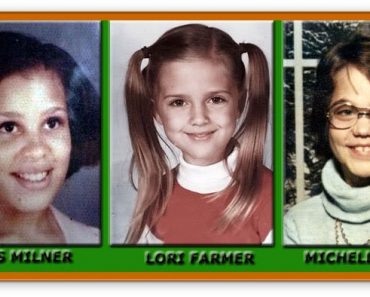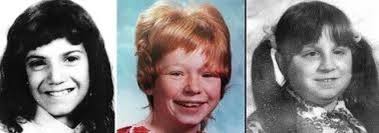
The Alphabet Murders
The Double Initial Murders
Cold Case File
Crime Spree: 1971 – 1973
The Alphabet Murders, also known as the Double Initial Murders, are an unsolved series of child murders which occurred between 1971 and 1973 in Rochester, New York.
All three victims of the Alphabet Murders were girls aged ten or eleven whose surname began with the same letter as that of her first name. Each victim had been sexually assaulted and murdered by either manual or ligature strangulation before her body was discarded in or near a town or village also beginning with same letter as her initials.
All three murders were committed by an as yet, unidentified serial killer.
Carmen Colón in Churchville
At 4:20 p.m. on November 16, 1971 a 10-year-old child named Carmen Colón disappeared while returning home from an errand in Rochester, New York.
According to eyewitnesses, Colón entered the pharmacy her grandmother had instructed her to go to on West Main Street, but left the store when she was told the prescription she had been instructed to collect had not been processed.
Carmen was then seen entering a car parked close to the pharmacy.
Carmen Colón was reported missing at 7:50 p.m. that same evening.
Approximately fifty minutes after Colón exited the pharmacy, scores of motorists driving along Interstate 490 observed the child, naked from the waist down, running from a reversing vehicle believed to be a dark-colored Ford Pinto hatchback, frantically waving her arms and shouting in an attempt to flag down a passing vehicle. At least one of these witnesses observed Colón being submissively led back to this vehicle by her abductor.
Two days later, two teenage boys discovered Colón’s partially nude body in a gully not far from Interstate 490, and close to the village of Churchville. This location was approximately 12 miles from where Colón had last been seen alive. Her coat was discovered in a culvert some three hundred feet from her body, her trousers were only discovered on November 30, close to the service road near where numerous motorists had observed her attempting to escape her abductor.
An autopsy revealed that, in addition to having been raped, the child had suffered a fracture to her skull and one of her vertebrae before she had been manually strangled to death. Furthermore, her body had been extensively scratched by fingernails.
Both the murder of Carmen Colón and the fact no individual who had observed the child attempting to flee from her abductor alongside Interstate 490 had attempted to offer her any assistance generated intense public outrage.
Two New York newspapers, the Times Union and the Democrat and Chronicle, initially offered a combined reward of $2,500 for information leading to the arrest and conviction of her murderer, and all information each publication received was relayed to police. Numerous local businesses and residents added private donations to the reward fund, gradually leading the sum to exceed $6,000.
Although police interrogated several suspects in the months following Colón’s murder, all were cleared of involvement, and by December 21, the number of investigators assigned to the case on a full-time basis was decreased to three.
Wanda Walkowicz in Webster
Seventeen months later, at approximately 5:00 p.m. on April 2, 1973, 11-year-old Wanda Walkowicz disappeared from the east side of Rochester while returning home from an errand.
According to the owner of the delicatessen Walkowicz had been sent to buy some groceries. He had made her purchases at approximately 5:15 p.m. before she had begun walking alone down Conkey Avenue.
Wanda Walkowicz was reported missing at 8:00 p.m. that evening.
Police immediately launched an intense search to locate Walkowicz. Almost fifty detectives searched several square miles of terrain around her home, the delicatessen and areas around the Genesee River where Wanda was known to play.
These searches failed to locate the child, although several neighborhood residents recalled observing Walkowicz, struggling to carry the bag of groceries, walking just north of Avenue B. Three classmates specifically observed Wanda bracing the bag against a fence in order to improve her grip on the bag as a brown vehicle drove past her.
Walkowicz’s fully clothed body was found by a police officer at 10:15 a.m. the following day, discarded at the base of a hillside alongside an access road to State Route 104 in Webster, approximately 7 miles from Rochester. The position of her body indicated she had likely been thrown from a moving vehicle, with her body rolling down the embankment.
An autopsy revealed Wanda had been sexually assaulted, then strangled from behind with a ligature, most likely a belt. Several defensive wounds indicated Walkowicz had evidently fought her murderer.
In addition, her body had been redressed after death. The autopsy also revealed traces of semen and pubic hair upon the child’s body. Furthermore, several strands of white cat fur were found on her clothing, although the Walkowicz family did not own a pet with fur of this color.
As had been the case with Carmen Colón, investigators established an anonymous telephone hotline in addition to distributing numerous flyers throughout Rochester appealing for information. A reward of $10,000 for information leading to the arrest and conviction of Walkowicz’s murder was also established.
Tips Come In For The Alphabet Murders
These police inquiries produced an eyewitness who informed investigators that as Walkowicz had walked home from the delicatessen on the evening of April 2, he had observed the child standing alongside the passenger door of a large brown vehicle, conversing with the driver. This eyewitness was unable to obtain a clear view of the occupant of the vehicle, although the location of this sighting was just two-tenths of a mile from the Walkowicz home. Another individual who contacted investigators following the installation of the anonymous hotline informed investigators she had observed a man forcing a red haired girl matching Walkowicz’s description into a light-colored Dodge Dart on Conkey Avenue between 5:30 p.m. and 6:00 p.m. on the evening of her disappearance.
The Rochester Police Department dismissed any suggestion of a link between the murders of Colón and Walkowicz, although a sheriff’s sergeant who had been assigned to investigate Colón’s murder (by this stage still an open although largely inactive case) was reassigned to the task force implemented to investigate the murder of Walkowicz.
In September 1973, local television network WOKR announced plans to broadcast a televised reconstruction of Walkowicz’s abduction and subsequent recovery of her body. This 30-minute episode was broadcast on October 21st, accompanied by public appeals for witnesses to contact authorities. Although this program resulted in the Rochester Police Department receiving over 200 calls from the public, no useful leads were gained.
Michelle Maenza in Macedon
Seven months later, on the evening of November 26, 1973, 11-year-old Michelle Maenza was reported missing by her mother, Carolyn, after she failed to return home from school.
Subsequent investigations would determine Maenza was last seen by her classmates at approximately 3:20 p.m. walking alone en-route to a shopping plaza located close to her school with the intention of retrieving a purse her mother had left inside a store earlier that day.
Approximately ten minutes later, a witness observed Maenza sitting in the passenger seat of a beige or tan vehicle traveling at high speed on Ackerman Street before turning onto Webster Avenue.
According to this witness, the child had been crying.
At 5:30 p.m on November 26, a motorist observed a man standing by a large beige or tan vehicle with a flat tire, parked alongside Route 350 in the town of Walworth, holding a girl he strongly believed to be Michelle Maenza by the wrist.
When this motorist had stopped to offer assistance, the individual had deliberately “grabbed the girl and pushed her behind his back”, also obscuring his license plate from the motorist’s view as he stared in his direction with such a menacing expression on his face that the motorist had felt compelled to drive away.
Maenza’s fully clothed body was discovered at 10:30 a.m. on November 28, lying face down in a ditch alongside a rural road in Macedon, approximately 15 miles from Rochester.
Her autopsy revealed that in addition to receiving extensive blunt force trauma to her body, Maenza had been raped, then strangled to death from behind with a ligature, possibly a thin rope. Numerous strands of white cat fur were discovered on her clothing and leaf samples, matching the foliage where her body was discovered, were recovered from within one of her clenched hands, indicating she had likely been strangled to death at or near the location where she was found.
Investigators were able to retrieve a partial palm print from her neck and traces of semen on her body and underwear. A forensic analysis of the semen samples determined she had been raped by only one individual.
Similarities in the Alphabet Murders
All three victims were pre-adolescent females who had disappeared from Rochester in the early afternoon on days of light or heavy rain and whose bodies were later discovered within adjoining counties. The body of each girl had been discovered either fully clothed or partially clothed close to an expressway at a location typically accessible by vehicle and each victim had evidently been thrown from or carried from a car to the location her body had been discarded.
Each child was short in height, and all three girls had been raped before being strangled to death. In addition, all three were known to be viewed as somewhat lonely outcasts among their peers.
Furthermore, an analysis of the stomach contents of both Walkowicz and Maenza revealed both girls had ingested food shortly before their death which neither girl is known to have eaten prior to her disappearance and the bodies both girls had been redressed after death.
The Differences in the Alphabet Murders
Both contemporary and current investigators have stated the possibility each victim had been selected due to the double initials of her name is extremely unlikely, as for an offender to pre-select his victims for this incidental reason would likely involve his stalking his victim over an extensive period of time, thus increasing the risk of his being noticed.
Furthermore, some investigators believe that, although the murders of Walkowicz and Maenza may have been committed by the same individual who had lured the girls to their deaths, the overall modus operandi of the murder of Carmen Colón strongly indicates her murder had been committed by an individual known—and possibly related—to her as opposed to an individual unknown to her, who had abducted her by force.
Suspects in the Alphabet Murders
Miguel Colón
In the case of Carmen Colón, her uncle, Miguel Colón, is considered by investigators to be a strong suspect in her murder. Miguel was the brother of Colón’s father, Justiniano. Following the separation of Colón’s parents, he had formed a relationship with her mother, Guillermina, becoming known to Colón as “Uncle Miguel.”
Typically, on occasions Colón walked to the pharmacy to collect family prescriptions, she had been accompanied by her grandfather, Felix, although on the date of her disappearance, Colón had pleaded with her grandparents to be allowed to walk to the pharmacy unaccompanied.
Just weeks prior to Colón’s abduction and murder, her uncle is known to have purchased a car closely matching the vehicle seen by eyewitnesses reversing upon Interstate 490 in pursuit of the child. Investigators did conduct a search of this vehicle shortly after Colón’s murder, discovering the interior and exterior of the car had been extensively cleaned, and the trunk had been washed with a strong cleaning solution.
Questioning of the dealership which had recently sold the vehicle to Miguel revealed the trunk had not been washed with a detergent prior to sale. Moreover, a doll belonging to the child was found in his car, although Colón’s relatives informed investigators she had frequently traveled in Miguel’s vehicle and may have left the toy in his car.
Furthermore, according to a friend, two days after the death of his niece, Miguel had informed him of his intention to leave the country as he had “done something wrong in Rochester.” He relocated from Rochester to Puerto Rico just four days after the murder of his niece.
Investigators did travel to San Juan to question Miguel in March 1972, although local newspapers published articles detailing police intentions to question him, resulting in Miguel fleeting from authorities. Miguel surrendered to authorities on March 26, and agreed to be extradited back to Rochester to face questioning.
Miguel Colón was unable to provide a credible alibi for his movements on the date of his niece’s murder, and no individual could be located to corroborate his claims regarding his whereabouts. Despite strong circumstantial evidence attesting to Miguel’s guilt, no physical evidence was located at the crime scene or within his vehicle to link him to the murder.
Miguel Colón committed suicide in 1991 at the age of 44 following an incident of domestic violence in which he shot and wounded both his wife and his brother.
Dennis Termini
One individual considered a strong suspect in the Alphabet Murders is a 25-year-old Rochester firefighter named Dennis Termini. Termini was a prolific serial offender known as the “Garage Rapist” who is known to have committed a minimum of fourteen rapes of teenage girls and young women between 1971 and 1973. He is also known to have owned a beige vehicle similar in description to the vehicle observed by several eyewitnesses to the abductions. Moreover, he is known to have lived at an address on Bock Street—an address close to the area victim Michelle Maenza had last been seen alive.
Five weeks after the death of the final victim of the Alphabet Murders, on January 1, 1974, Termini is known to have attempted to abduct a teenage girl at gunpoint, although he fled the scene when the teenager refused to cease screaming. Shortly thereafter, he abducted another potential victim, although on this occasion he was pursued by police, culminating in Termini committing suicide by shooting himself in the head. A subsequent forensic examination of Termini’s vehicle did reveal traces of white cat fur on the upholstery.
In January 2007, Termini’s body was exhumed to obtain a DNA sample for comparison with the semen samples recovered from Walkowicz’s body.
The results of this test confirmed Termini was not responsible for her murder. However, no physical evidence retrieved from the bodies of Colón or Maenza exists for comparison with Termini’s DNA.
Another suspect in the Alphabet Murders is serial killer Kenneth Bianchi, who at the time of the murders worked as an ice cream vendor in Rochester. He is known to have worked at locations close to the first two murder scenes. Bianchi had relocated from Rochester to Los Angeles in January 1976. Between 1977 and 1978, he and his cousin, Angelo Buono, Jr., committed the Hillside Strangler murders of 10 girls and young women between the ages of 12 and 28.
Bianchi was never charged with the Alphabet Murders, and has vehemently denied any culpability in the homicides. He has repeatedly attempted to have investigators officially clear him of suspicion. However, while residing in Rochester, he is known to have driven a vehicle of the same color and model as a vehicle seen near one of the abduction sites.
In April 2011, a 77-year-old named Joseph Naso was arrested in Reno, Nevada for the murders of four women in California committed between 1977 and 1994, all of whom are believed to have been prostitutes and all of whose surname began with the same letter as that of her first name. Naso was a New York native who had lived in Rochester during the early 1970’s and who is known to have regularly traveled between New York and California.
Initially described by authorities as a person of interest in the Alphabet Murders, DNA testing has confirmed Naso’s DNA is not a match to the semen samples recovered from the body of Wanda Walkowicz.
Naso was brought to trial on June 18, 2013, charged with the murder of the four California Alphabet Murder victims. He was unanimously convicted of each murder on August 20. On November 22, 2013, Naso was formally sentenced to death.
A police spokesman has stated that the Rochester Police Department remains committed to solving the case.

source: wikipedia |theguardian.com | nbcnews.com | unsolvedcasebook.com
This site contains affiliate links. We may, at no cost to you, receive a commission for purchases made through these links






